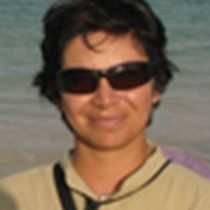Hood Island, otherwise known as Española, is the oldest in the archipelago, at approximately four million years of age. We started our day with Zodiacs departing to Gardner Islet for deep water snorkeling, where our guests had a chance to snorkel with a variety of fish, Galapagos sea lions, and even a juvenile Galapagos shark. The guests who wanted to try snorkeling for the first time had the opportunity to spend time on the gorgeous white sandy beach, surrounded by the turquoise blue waters that bathe Gardner bay. We also offered the option of kayaking along the coast of Hood Island to observe the striking volcanic landscapes.
After everybody had returned to our ship, we started the navigation towards the western coast of Hood Island. This afternoon we landed on Punta Suarez, where we went for a long, active hike to observe the colonies of seabirds that nest here, such as Nazca boobies and waved albatross. The albatross only arrived two weeks ago, and a few males were spotted on land, still waiting for their partners. Huge waves crashed along the cliffs, and the sky was full of red-billed tropic birds, albatrosses, and frigatebirds.
During our hike along the path, we also observed the top land predator on the islands: the Galapagos hawk. This species of bird feeds mostly on lava lizards, and these Hood lava lizards are the largest in the archipelago. Several were observed along the trail and many were sitting on top the trail markers.
What an excellent start to our expedition! We are eager to see what other discoveries await us as our voyage continues!







